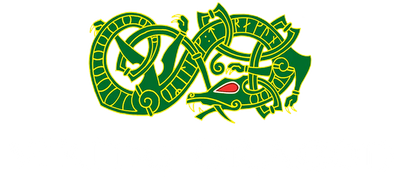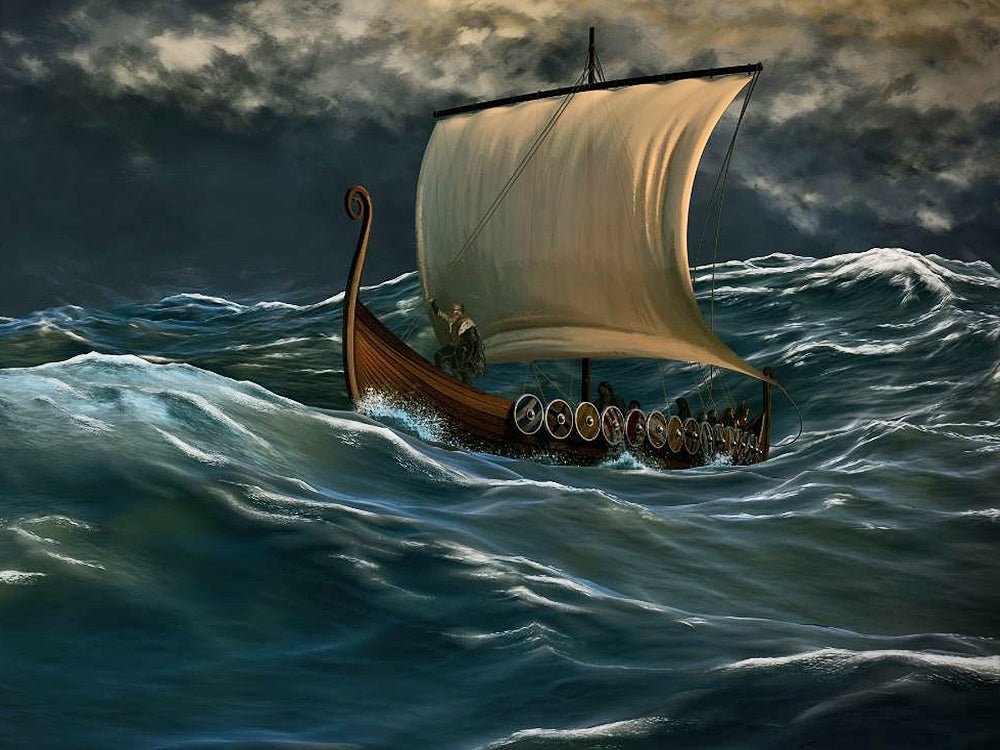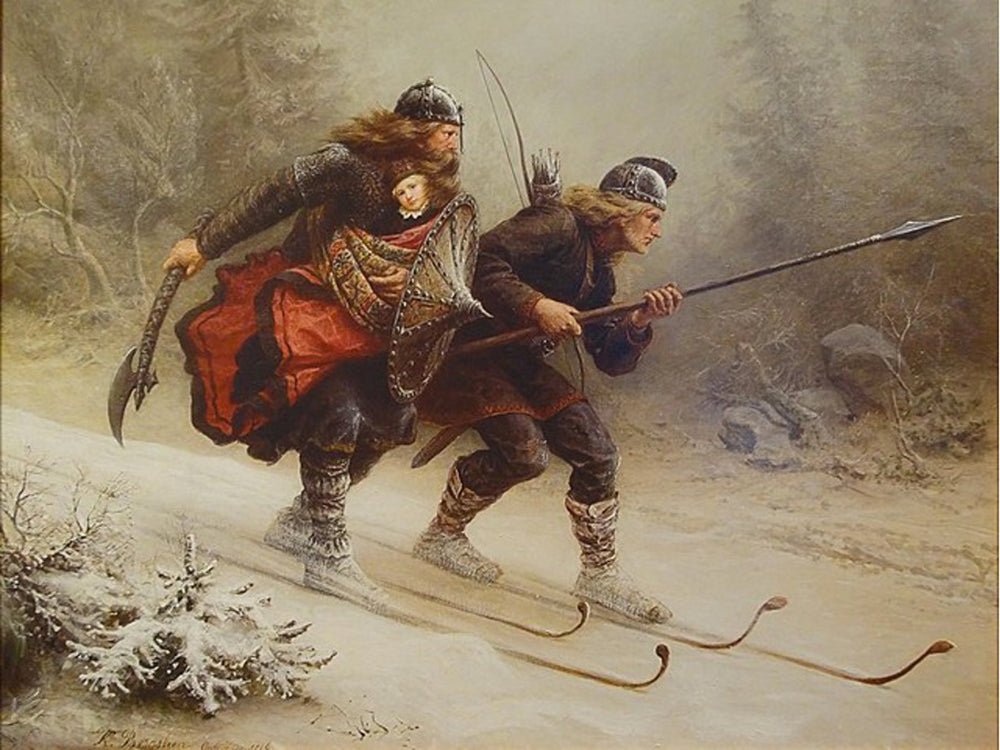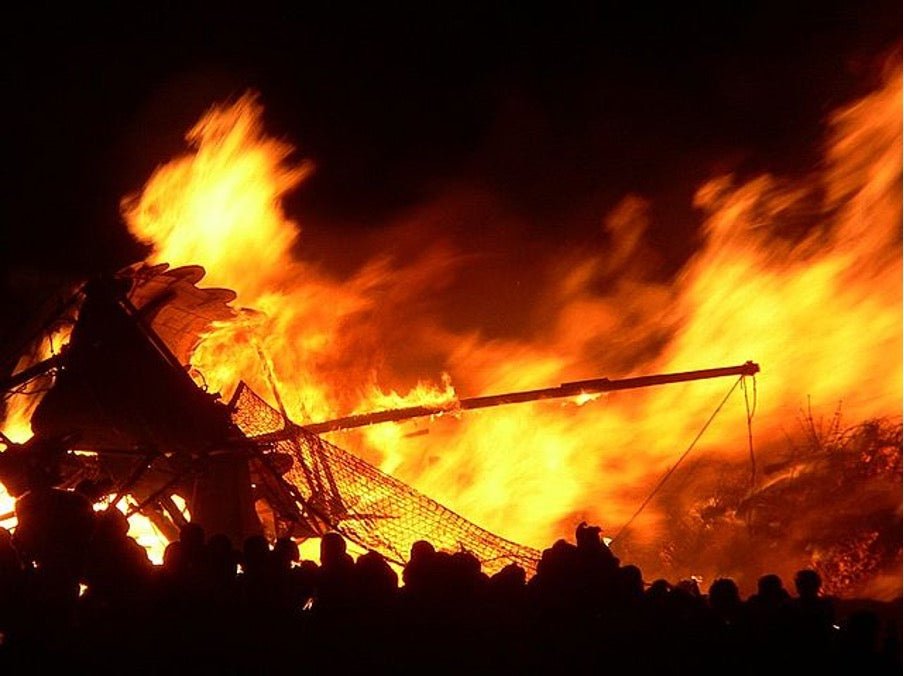We all know that the Vikings were some of the most skilled seafarers of their day. Medieval Norsemen ruled a vast network of trading outposts and settlements, as well as full-blown colonies far from their home Scandinavian homeland. But exactly how far did the Vikings travel in their quest for exploration and influence over the globe?
From East to West, and North to South, the Viking world spanned thousands of kilometres. Taking in their entire network is a momentous task; far more than can be covered in one short article. So let’s focus right now on the Vikings’ dominance over the North Atlantic Ocean, tracing their route from Scandinavia to modern-day Canada.
Beyond the North Sea

Given the meaning of ‘Viking’ as ‘pirate’ or ‘raider,’ the Viking-age isn’t usually said to have begun until 793 when Nordic sailors attacked the island of Lindisfarne off the Eastern coast of England. Shortly after their first forays into raiding across the North Sea, the Vikings set up their first settlements in the British Isles. By the end of the 9th century, there were Norse settlements in modern-day England, Scotland, Ireland and the Isle of Man, and large areas of Britain were under Scandinavian rule.
But the Vikings had their ambitions set further afield than their closest Westward neighbours. In the late 800s, Norway was suffering from having too many people and too little farmland. Meanwhile, constant clashes with native British and Irish populations didn’t make the British Isles the most attractive destination to establish new, permanent settlements. It’s at this point that Norwegians looked northwest to Iceland: a known, unpopulated land where Scandinavians could migrate without entering into conflict with locals. In 874, Ingólfr Arnarson founded the first Viking colony on the island, which, according to archaeological evidence, was almost entirely occupied within a few decades. Iceland became a major Nordic kingdom and a crucial trading and exploration outpost in the Atlantic.
Venturing West

As well as a Nordic hub, Iceland was the setting-off point for the Viking colonisation of Greenland. Born in Norway but exiled with his family at the age of 10, Erik Thorvaldsson (also known as Erik the Red) would go on to establish the first Viking settlement in Greenland following his own exile from Iceland in 982. By this point, the Icelanders were well aware of the presence of Greenland. It had already (accidentally) been discovered by Gunnbjörn Ulfsson and had been occasionally visited by Icelanders who were blown off course in the North Atlantic. Still, upon setting off on his journey, Erik the Red didn’t know exactly what he would find on the as yet unexplored landmass.
According to the Saga of Erik the Red, Thorvaldsson arrived in summer to find the new land ice-free, mild and with fairly similar conditions to Iceland. He was optimistic that this would be a fertile land for farming and permanent colonisation. He returned from exile three years later and regaled the Icelanders with stories about the prosperous future waiting for them in Greenland (purposefully naming it this to make it sound more appealing). Erik returned west the next summer with 25 ships of hopeful colonists, only 14 of which would make landfall.
The new arrivals established two colonies, one on the East and one on the West of the island, though only the Western settlement proved suitable for farming. Greenland never took off as a Viking kingdom quite as Iceland had done. Though the land was serviceable, farming was more difficult than in Scandinavia or Iceland, and settlers relied more heavily on seasonal seal and whale hunts in the far North. Like in the British Isles, Greenland also had native populations who were not always happy to live alongside the settlers. Waves of immigration from an overpopulated Iceland also brought in a series of epidemics, one of which killed a large proportion of the Viking Greelanders, including Erik Thorvaldsson.
‘Discovering’ the Americas

Erik the Red was not the only adventurer in his family; his seafaring spirit was shared by his son, Lief Erikson. As a young adult, Lief decided to visit his father’s native Norway, where he converted to Christianity. Determined to spread the word of God in Greenland, he returned home, only to find himself blown off course in the North Atlantic. When he and his crew made landfall, it was not in Greenland, but on the eastern coast of modern-day Canada.
Contrary to popular belief, Leif Erikson was not the first Viking to accidentally ‘discover’ the Americas. A few years prior, fellow Greenlander Bjarni Herjolfsson had been similarly lost in a storm and found himself in North America. Herjolfsson corrected course and returned home without investigating much on the new continent that he had discovered. Leif Erikson, on the other hand, was spellbound by what he had discovered. He called the new continent ‘Vinland’ after the fertile, grape-bearing vines that cross-crossed the land. The Vikings collected samples of the bountiful wild fruits and wheat that they found and returned to Greenland.
After successfully spreading Christianity in his homeland (as was Leif’s initial mission), he set off west to find Vinland once more. Alongside a crew of 35 men, he sailed down the Canadian coast until he recognised the place where he had previously made landfall. The crew set up an overwinter settlement by a lake, each day sending out a delegation to survey the new territory. Erikson and his men explored thoroughly, discovering native edible plants and animals that they could bring back to Greenland when summer returned. Again, Leif was not in his home country for long. A year later he headed west, this time with his brother Thorvald in tow, to continue his exploration of North America.
Life in Canada

The Vikings didn’t just accidentally discover and then briefly explore Canada, they made a life there. Historians had long believed that the stories of Vikings settlements in North America were true (the Sagas’ descriptions of the Canadian coastline are strikingly accurate in themselves), however there was no archaeological evidence until the mid-20th century.
In 1960, the husband-and-wife archaeologist team of Helge and Anne Stine Ingstad set out to find evidence of Viking settlements in North America. While searching for the possible location of the famed Vinland in New Brunswick, the pair were led to a group of small mounds by a local fisherman, which the inhabitants of the village of L’Anse aux Meadows believed to be an old Native American camp. Excavations of the site began in 1961, and quickly revealed artefacts of everyday Viking life, similar to those found in Iceland and Greenland.
The Viking settlement at L’Anse aux Meadows was carbon-dated to between 990 and 1050 CE. Discoveries included everyday artefacts such as pots, a whetstone, a spindle, stone weights, fragments of an oil lamp and even the remains of a smithy. The village could have supported a population of up to 160 people, and it seems to have been a permanent settlement rather than a temporary encampment. Though no other Viking-age settlements have been found in North America so far, many archaeologists and historians believe that there are more out there to be discovered.



